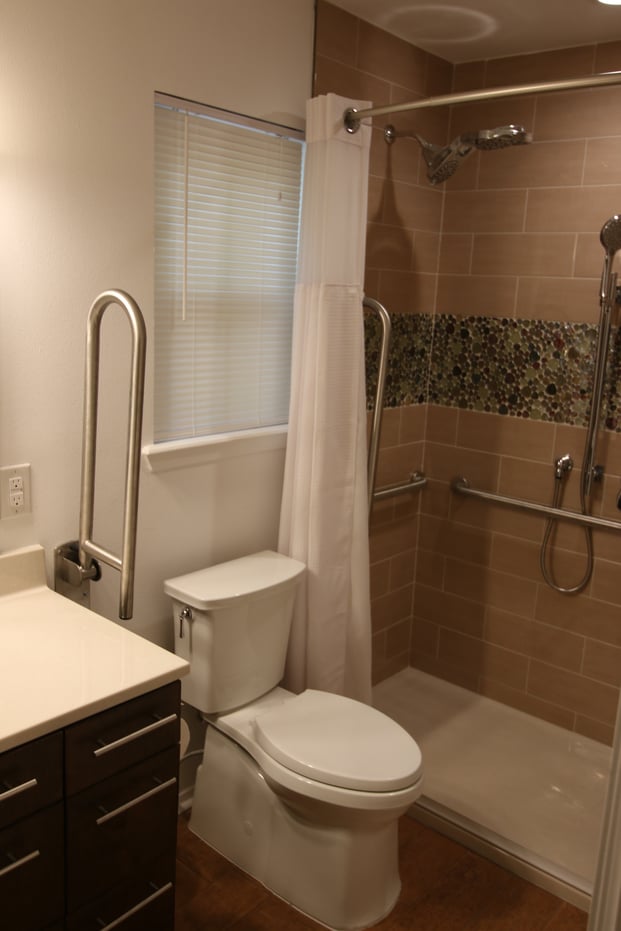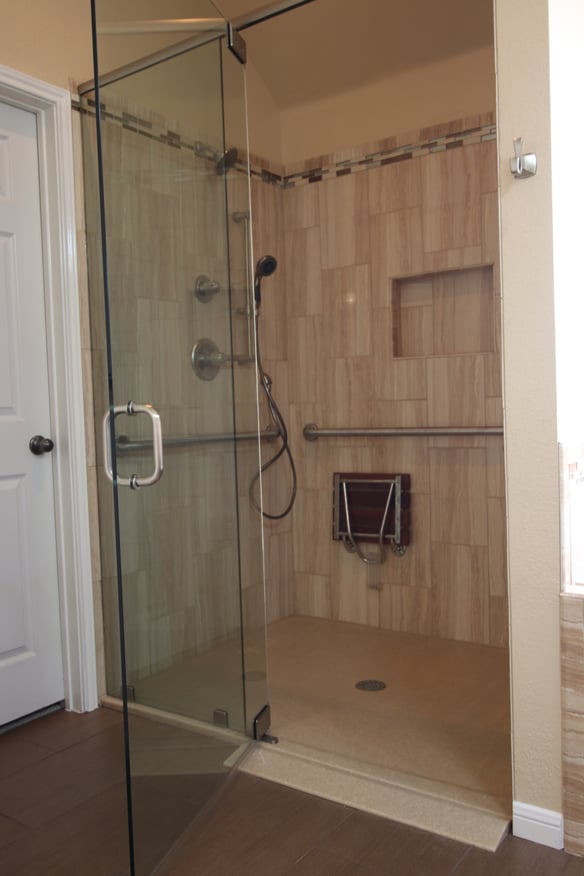No matter how old you are you should periodically evaluate your residence to determine whether it suits you not just for the present but the future. Your home assessments will be rethought every time your living situation changes. Whether childproofing for a newborn, making a home more accessible following a sickness or unfortunate accident to someone in the family, or making a toilet area safer for an aging residing parent, there will be an immediate evolution to your primary domicile. These same life span design features are even more important if you believe you're past the age of wanting to move and are relishing the thought of aging in your own home, no matter what physical limitations you might later develop. Incorporating smart aging design concepts into a home will attract a larger group of buyers when you decide to finally sell your home.

When mobility becomes an issue for any homeowner, regardless of age, the question arises concerning physically moving to a different home with a bath that is more accessible or making the existing home modifications which will meet the need of the new life changes.Solving aging in place issues will soon become the number one challenge concerning the present obsolete housing inventory in our country. Our present day obsolete homes now inhabited by the baby boomer generation will slowly and increasingly raise their outdated and obsolete ugly heads and expose their true lack of kitchen or bathroom accessibility to those very people inhabiting them. The situation will only become ever more expanding in time. When these homes were previously purchased, they represented an absolute castle in the world of their owners in which to prepare for a day and they also acted as a retreat from life's tough interactions. They housed our families, our memories, and our stuff. They represented a place where we could be ourselves. Our homes have always been exempt from any and all of the accessibility regulations that have been put in place since 1968 when our Viet Nam veterans were returning home. The new evolving concept known as Universal Design and specialized handicap remodeling contractors for home remodeling is catching on nationwide and has been for several years as a sign of the times. Universal design techniques used in building makes a home more accessible to all regardless of their mobility or adaptive abilities.
Many people find themselves needing accessible homes for themselves or family members. There are approximately 30 million Americans using wheelchairs and the number of people who need accessible homes will continue to increase as disabled and aging people are finding more ways to remain living in their homes. One important way to increase independent living is making a home accessible to an individual’s personal needs. Home modifications making homes wheelchair accessible can increase safety, accessibility, and independence for people who want to live independently.
Falls and slips are among the most common causes of injury to senior or elderly people and for those with a disability. Smooth surfaces in combination with wet areas make the bathroom one of the most dangerous areas within the home. It is of paramount importance that the bathroom be updated providing safety for any person with limited mobility or the elderly. Grab bar installation will greatly improve safety and usability of the bathroom.
If the residence is fairly new and uses universal design techniques or the geographic area uses accessible housing standards, the walls in the tub area and the walls behind and next to the toilet should have extra blocking. Blocking is a structural reinforcement within a wall that allows a grab bar to be attached securely to withstand a 250 pound force. Studs can also be used but may not be located in the most desirable location for the length of the grab bar being used. The purpose of a grab bar is to help support a person, and the grab bar must be able to support a person's weight until help arrives or the person can right themselves. A grab bar is both pulled and pushed against.The standard size for a grab bar is 1-1/4 to 1-1/2 inches in diameter and should be 1-1/2 inches away from the wall. With some new construction, blocking is placed in the walls such that grab bars can be installed easily at a later date when needed. If there is no blocking in the walls, it can be added later but the wall must be open up to expose the studs. The recommended type is 3/4 inch plywood, 6 to 12 inches wide and nailed into the studs or a 2 by 6 or 8 inch block nailed into the studs. Today, grab bars come in many metal finishes and decorative shapes. Contrasting colors are easier to see in an emergency. Grab bars with a slight milled in texture are easier to grip. The blocking should be the full length of the tub and at both ends. This allows grab bars to be installed anywhere in the area or in more than one place. Never install grab bars on an angle where wet hands can slip. Grab bars should exist on all sides of the shower and tub walls. At the toilet, the blocked areas should be behind the toilet and on at least one side. If there is no wall next to the toilet, an L-shaped grab bar can be installed by attaching the front end to the floor and the back to the wall behind the toilet. All grab bars should be installed at the universal height of 34-36 inches above the finished floor. Folding grab bars can be used when adjacent walls don't exist in a 24" reach distance for a seated person.
Once the demands of our built environment exceed their capacities we become excluded from a room or even the entire home. The building world must work in unison to be sure the entire living environment meets basic needs in addition to affordability and structural integrity for the consumer and home owner. This includes both the home and the components within the home being accessible to all inhabitants. Privacy, sense of belonging, sense of control, and the sense of safety and security make up the quality of life for any home and should be considered for any design. Universal Design is where we are headed out of necessity.














